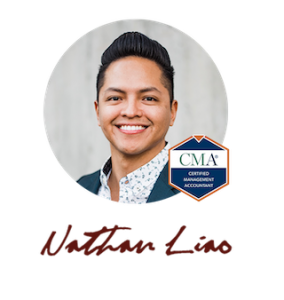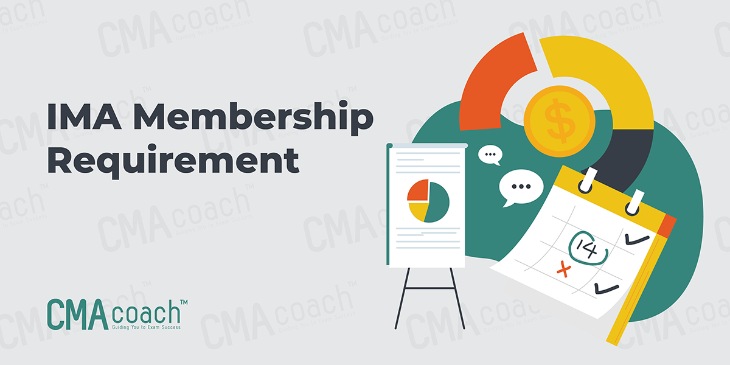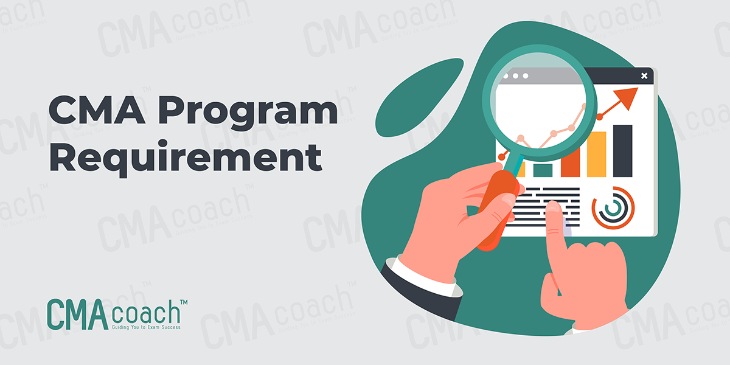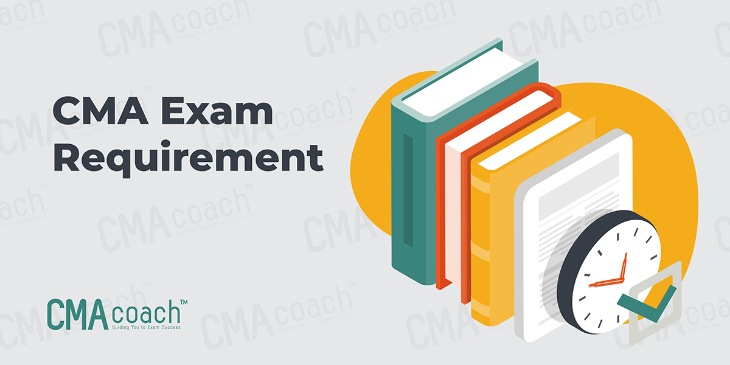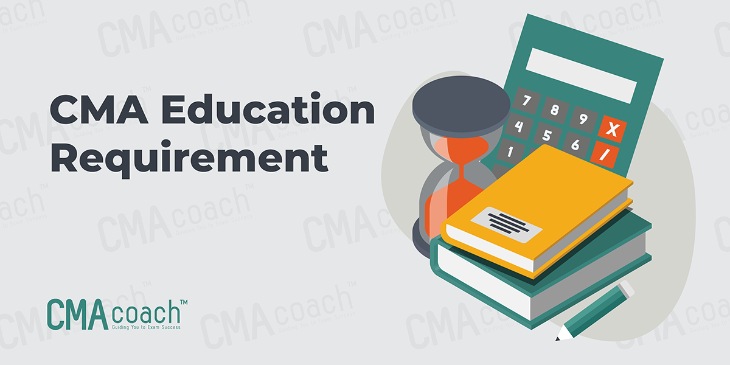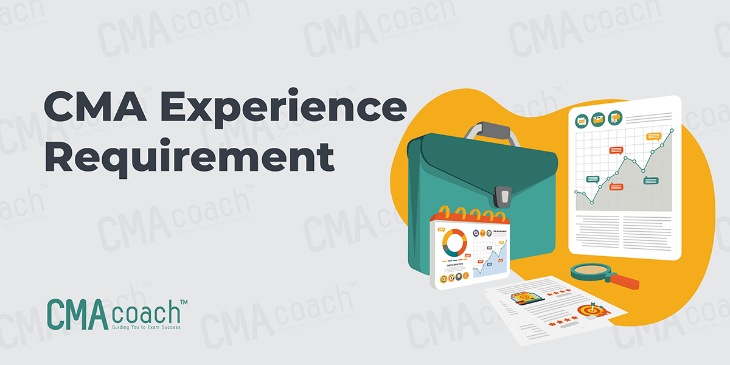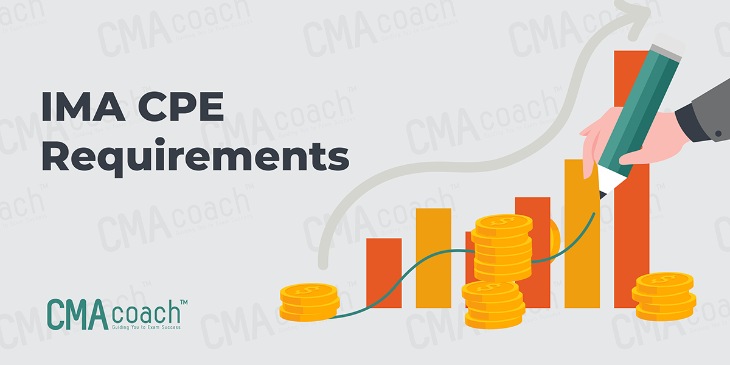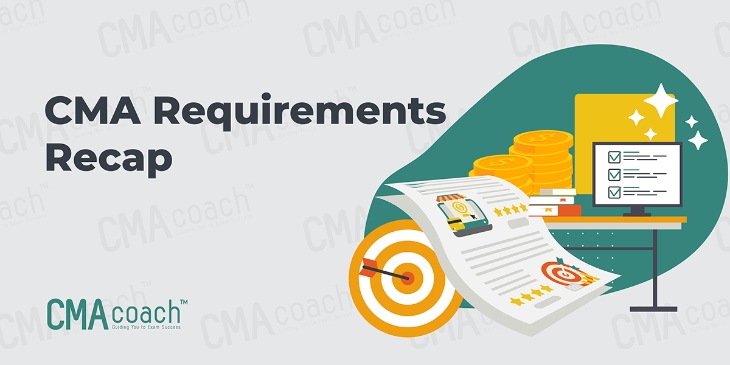Certified Management Accountant Requirements: All You Need to Know
Looking to become a Certified Management Accounting professional? Meeting the CMA requirements and adding this sought-after credential to your name opens a multitude of possibilities.
It all starts with passing the CMA exam, but you will need to take some additional steps to ensure you meet the Certified Management Accountant requirements.
Originally published in 2021, this article was updated and republished on April 25, 2024.
The Path to Becoming a Certified Management Accountant
Here’s the general timeline every CMA follows to get certified:
- Enroll in an online CMA review course.
- Join the Institute of Management Accountants (IMA).
- Enter the Certified Management Accountant program.
- Study for and pass the CMA exam.
- Meet the education requirements with a four-year degree.
- Meet the experience requirements by getting two years of experience in financial management or management accounting.
- IMA CPE Requirements
You will also have CMA Continuing Professional Education (CPE) requirements to meet each year but only after you’ve passed the exams. These are just the logistics of becoming a CMA and maintaining your certification.
CMA certification requirements are important to know and follow so you don’t encounter any barriers along the way. Let’s break down how and when to meet each of the requirements in your journey to become a CMA.
IMA Membership Requirement
The IMA is the governing body behind the CMA certification. It oversees the certification process and the exam, and you have to be a member before you can take the CMA exam. Becoming an IMA member means that you’ll get access to CMA resources and can become an active CMA candidate.
There are numerous active membership benefits, including:
- Free professional courses
- Career advancement opportunities, including professional assessments and access to higher-paying positions
- Job search boards
- Ongoing learning opportunities from NASBA and more
- Discounts on CPE courses
- Multiple publications, including Management Accounting Quarterly and Strategic Finance
- IMA books
- The McLeod Information Center database
You’ll use the IMA website to set up your account, register for the CMA program, register for and pay for the exam, and maintain records of all of your CMA certification requirements.
It does cost money to become a member of the IMA. Here are the IMA membership options and fees:
- Professional membership and application processing fee: $300
- Academic membership and application processing fee: $225
- One-year student membership: $49
You can use the IMA online store to learn more about each of these, but essentially you qualify for the reduced rate if you are an academic or active student. The annual fee for IMA membership is currently what you see above, minus a $15 one-time application fee:
- Annual professional IMA membership: $295
- Annual academic IMA membership: $160
Student memberships are a set price per year for the time period in which you are eligible. You will age out of eligibility, of course, once you are no longer a student. When that happens, you’ll simply sign up for a professional or academic IMA membership.
Keep in mind, in addition to being essential to take the CMA, your IMA membership can serve as a professional resource for you long-term. It is also the body that approves your annual CPE credits, which we’ll cover more in a minute.
CMA Program Requirement
The IMA has a CMA program that you must join. This program enrolls you as a CMA candidate, enabling you to begin preparing for the certification exam.
Here is a breakdown of CMA program fees, which vary, based on your membership level:
For student/academic IMA membership:
- The CMA entrance fee is $225
- The CMA exam fee is $370 per part
For professional IMA membership:
- The CMA entrance fee is $300
- The CMA exam fee is $495 per part
Keep in mind the entrance fee is nonrefundable. CMA entrance fees are good for three years. By then, you need to pass both parts of the CMA exam, or your timeline will reset. The fees listed above don’t include the IMA membership fee, which is also part of the requirements for CMA.
CMA Exam Requirement
The only CMA exam requirement to meet before you can sit for the exam is to be a member of the IMA and pay the entrance fee and exam fees. The complete Certified Management Accountant requirements include a degree and work experience, but you don’t need to complete those before you write the exam.
However, meeting the CMA requirements means passing a difficult 2-part exam (a first part consisting of 100 multiple-choice questions and two 30-minute essay questions/scenarios describing common business situations). The average pass rate of the CMA exam is only 50%.
If you want to pass on your first try, you’ll need to invest time and resources in quality CMA study materials. The CMA exam is a difficult test, evidenced by its 50% global passing rate.
There’s no official study program, and you can use any CMA study methods and exam preparation materials that appeal to you. That said, an instructor-led online CMA exam review course is most common, and will give you the best chance of success.
It’s important to make sure the course you choose includes expert content from a trusted provider who has experience with the CMA. Course features should include:
- CMA Textbooks
- Coaching support
- Practice tests and question banks
- Video and audio lessons
- Detailed answer explanations
I recommend studying for each part of the CMA exam for at least 16 weeks. Be sure you budget your time accordingly, especially if you are working full time, in school, or have other commitments to juggle. Check out my free CMA study guide for all the tips and strategies you need to get started.
Remember that the CMA exam is a two-part exam, written in two separate exam sittings. You must pass both sections to progress and meet this CMA requirement.
CMA Education Requirement
CMA education requirements can be achieved before or after taking the exam. In other words, education isn’t among the requirements to sit for the CMA exam, but it is required in order to receive your certification.
The CMA education requirement is a four-year degree from an accredited college or university. The school you go to doesn’t have to be U.S. based, as long as it is accredited.
Many people wonder, what kind of degree do I need to become a CMA?
The CMA degree requirements are not specific on the kind of degree you need. In other words, you don’t have to have a degree in finance or accounting. However, if your career aspirations are to become a CMA and work in corporate financial accounting and strategic management, it makes sense to get a degree in a related field.
In addition to education, you’ll also complete work experience (by doing part time or full time work in a company’s financial department, for example).
CMA Experience Requirement
CMA work experience requirement is two years of full-time continuous professional experience in financial management or management accounting. This is the actual on-the-job training that has to happen before you are granted a CMA certification.
The CMA work experience requirements do not have to be fulfilled before you take the CMA exam. In fact, you have seven years after passing the CMA exam in which to send in verification for this work requirement.
If you can only do part-time work, you will need to work for twice as long to fulfill the requirement. On average, if you work 20 hours a week as a part-timer, you will then need to work two years to get one year of qualified work experience.
Jobs that could count toward this requirement will include some tasks like these:
- Budgeting
- Forecasting
- Financial planning
- Reporting and presenting financial analysis
- Revenue reports
- Cost analysis
- Investment advice/decision analysis
- Risk evaluation
The goal is to not just have a job that applies management accounting in a theoretical way. You want hands-on experience in management accounting. Note, the position cannot be simply clerical or non-technical. You must be functioning as a financial professional in a qualifying role.
Remember, once you’ve earned a CMA certification, you can look forward to roles like CFO, senior accountant, financial analyst, and corporate controller. To get to those high-level positions, you have to check this work experience requirement. Even if you’re starting small, you have plenty of room for growth.
Your CMA experience requirement can be completed at any company. Ideally, you’ll use this opportunity to not only learn the field but also build your professional network.
And once you’ve completed these CMA education and work experience requirements and have passed both parts of the exam, can you add CMA after your name?
YES! Celebrate this amazing accomplishment! Adding CMA after your name on LinkedIn, your resume, business cards, and in your email signature is perfectly acceptable and definitely beneficial—it adds credibility to everything you do.
IMA CPE Requirements
The IMA is not only part of your life at the beginning of your CMA career. Your involvement with that body will continue throughout the course of your work and play an important role as you maintain your certification.
Once you meet all the Certified Management Accountant requirements and get your certification, you have to maintain it through continuing education.
IMA CPE requirements standardize the continuing professional education (CPE) units you need to take care of each year.
CPE hours can be a fulfilling way to keep learning throughout your career and ensure you remain knowledgeable and competitive in the field.
CMAs must complete 30 hours of CPE credits each year. Of these, two must be in ethics. Credit hours are granted by the IMA but may come from a variety of sources, including:
- IMA councils or chapters
- Employers
- Educational institutions
- Trade associations
- Businesses
The types of CPE courses may include:
- Self-study courses
- Seminars
- Short courses
- Professional meetings
- Trade association meetings
- Service as a college teacher
- Technical materials submitted for publication
Reporting resets on January 1 each year. As many as ten hours of your CPE units can be carried over, or rolled over, into the next year. You have to submit your CPE transcripts through the IMA’s website, logging in with your account.
CMA Certification Requirements Recap
To recap, you need to be sure you have a plan to fulfill the following Certified Management Accountant requirements:
- Become a member of the IMA
- Get a four-year college degree
- Fulfill two years of continuous work experience
- Pass the CMA exam
Remember, these don’t have to be sequential. Part of the reason you need to understand what each step entails is to be sure you don’t miss deadlines, but each step has its own time frame.
At the end of the day, this may feel like a long and arduous process. I get that. I also get that becoming a CMA was, for me, a life-changing experience. It can be for you too.
But all this hard work will eventually pay off. Holding a CMA certification can expand your duties and responsibilities in the field of financial management, which can add to your career versatility.
If you have additional questions about CMA requirements, drop a comment below!
